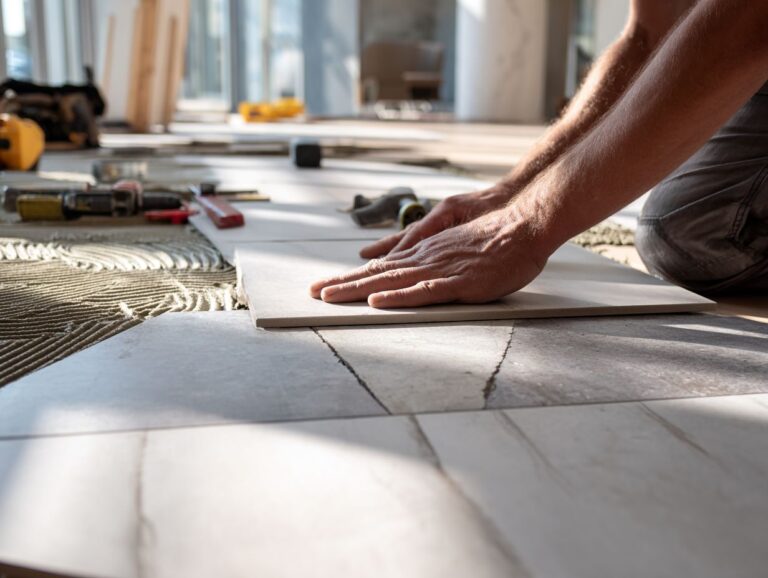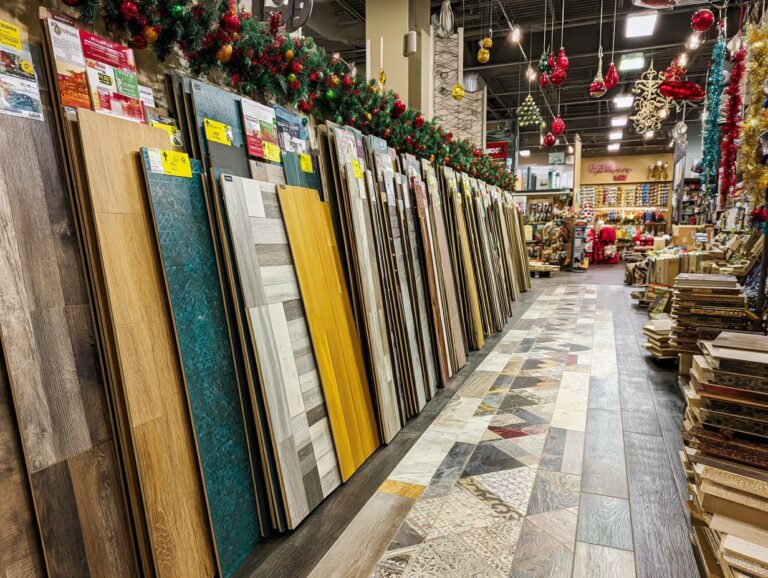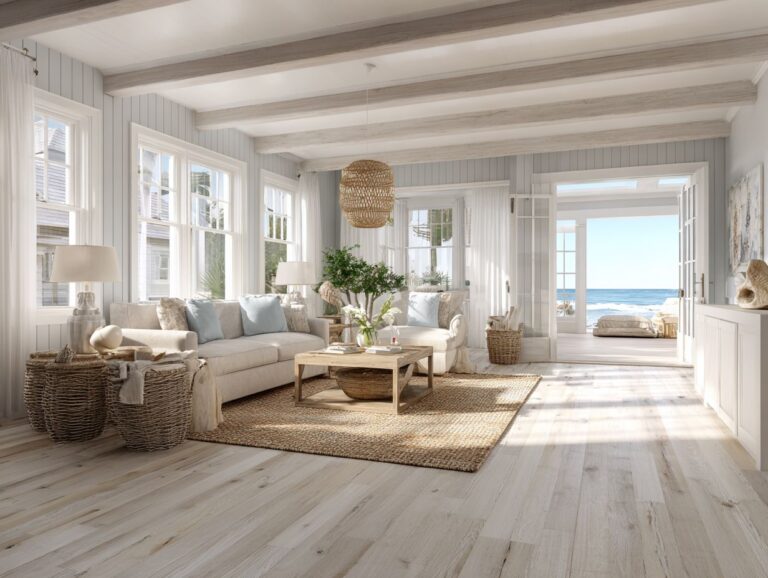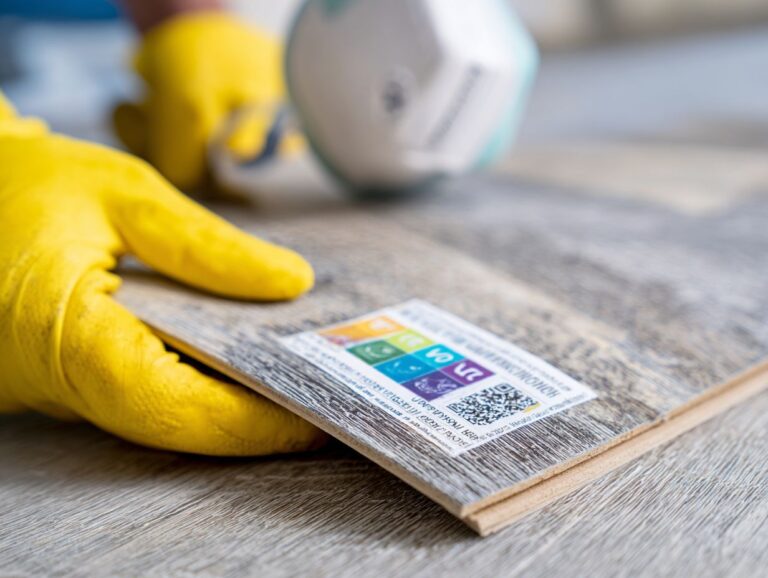Commercial-Grade Flooring for Home Use – When Why
Upgrade your home with strong and stylish commercial-grade flooring. Unlike standard residential flooring, options like Armstrong vinyl and rubber deliver the resilience of industrial flooring while enhancing aesthetics. If you’re looking to improve busy areas or need strong flooring for homes with pets, this guide explains when and why durable flooring is a good choice. Learn how these strong materials can improve your area and reduce costs over time.
Key Takeaways:
Contents
- Benefits of Commercial-Grade Flooring for Home Use
- Commercial Flooring and Home Trends 2024
- When to Consider Commercial-Grade Flooring
- Why Choose Commercial-Grade Flooring
- Types of Commercial-Grade Flooring
- Installation Considerations
- Frequently Asked Questions
- What is commercial-grade flooring and why should I use it for my home?
- When should I consider using commercial-grade flooring in my home?
- What are the benefits of using commercial-grade flooring for home use?
- Can commercial-grade flooring be used in all areas of the home?
- What should I look for when choosing commercial-grade flooring for my home?
- How does the cost of commercial-grade flooring compare to other flooring options?
Definition and Characteristics
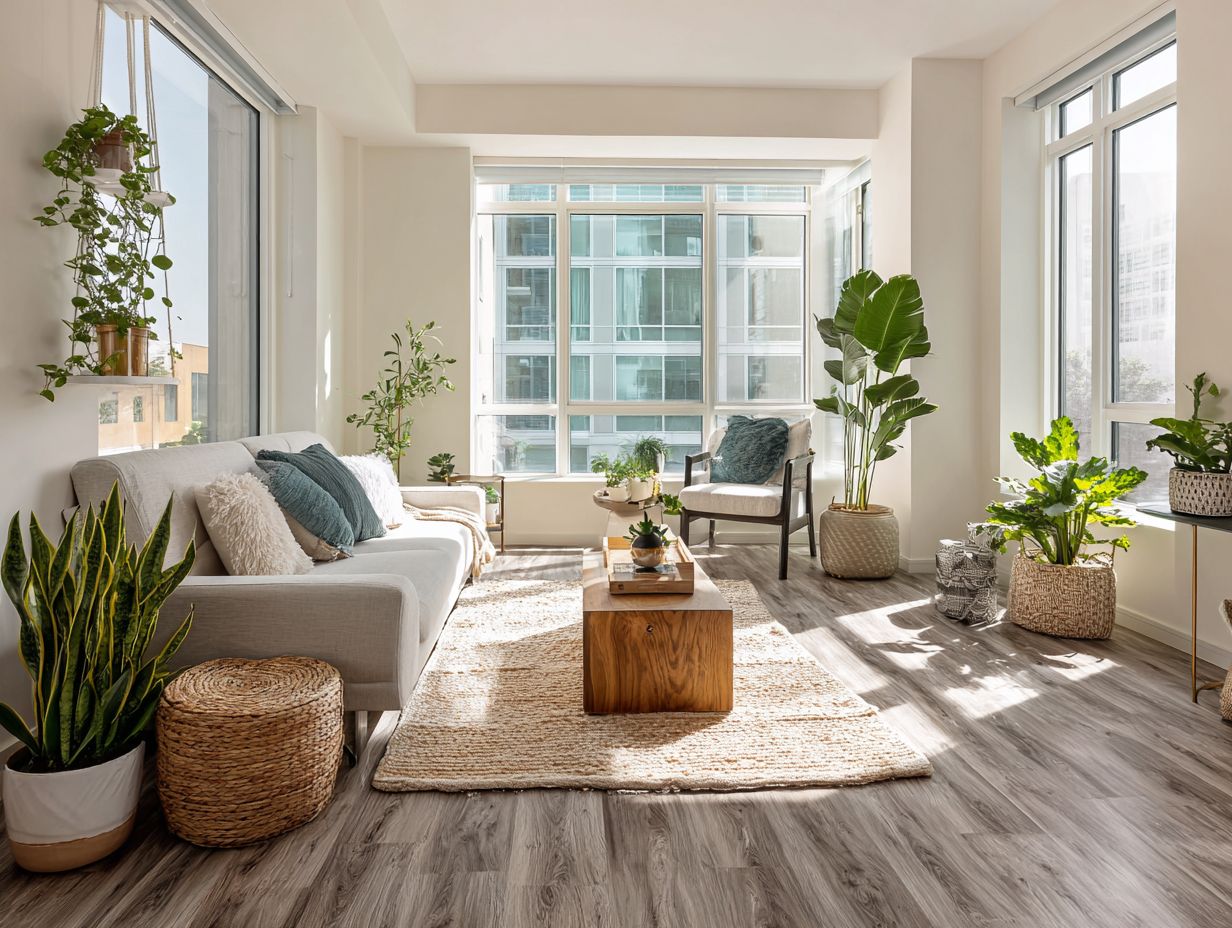
Commercial-grade flooring is built to handle a lot of foot traffic. It is strong, easy to clean, and comes in many designs.
This flooring typically includes materials like Luxury Vinyl Tile (LVT) and Vinyl Composition Tile (VCT), which offer resilience and waterproof properties.
Armstrong’s LVT collections offer different styles, including wood designs and stone patterns, allowing for varied appearances.
Also, performance factors like a thick wear layer and scratch resistance are important for keeping the look intact under pressure.
Businesses should consider warranties as well; many brands offer up to 15 years for commercial applications, reflecting their confidence in product longevity.
Differences Between Commercial and Residential Flooring
Unlike residential flooring, which prioritizes aesthetic quality, commercial flooring emphasizes durability, maintenance, and longevity, often at a competitive price point.
For instance, vinyl composition tile (VCT) is popular in commercial settings due to its cost-effectiveness, typically ranging from $2-$5 per square foot.
In contrast, resilient sheet flooring, priced between $3 and $7, offers seamless installation and easier maintenance.
Polished concrete is known for its strong durability and easy maintenance, with costs ranging from about $4 to $10 per square foot.
Knowing what your space needs will help you pick flooring that fits your budget and handles heavy use and spills well.
Benefits of Commercial-Grade Flooring for Home Use
Homeowners are finding many advantages to using commercial-grade flooring in their homes, achieving both practicality and style. If interested in exploring unique aesthetics, you might appreciate our insights on industrial style flooring and how it can bring a raw yet refined look to any space.
Durability and Longevity
Commercial-grade flooring is designed to last 15-20 years, significantly outlasting typical residential options which average 10-15 years.
To maximize the lifespan of commercial-grade flooring, consider investing in materials like rubber and luxury vinyl tile (LVT). Rubber flooring is resilient and easy to maintain, while LVT offers aesthetic versatility and water resistance.
Regular maintenance is important; a schedule should include:
- Daily sweeping
- Weekly mopping with a pH-neutral cleaner
- Monthly inspections for damages
For maintenance tools, microfiber mops and diluted neutral cleaners are effective. Using a good floor sealer makes your floors more durable and easier to clean, helping them last longer.
Cost-Effectiveness Over Time
Investing in commercial-grade flooring can save homeowners up to 30% over the lifespan of the flooring compared to standard residential options due to fewer repairs and replacements.
To maximize these savings, consider options like luxury vinyl tile (LVT) or epoxy coatings, which offer durability and are easy to maintain.
For instance, LVT can cost around $3-$7 per square foot initially but often lasts longer without needing replacement.
Pick flooring installed by certified professionals so warranties remain valid, because incorrect installation can cause expensive repairs.
Using good underlayment can improve how well your flooring works and lasts by giving it a strong base that reduces wear over time.
Variety of Styles and Designs
Commercial-grade flooring now comes in many styles, from modern LVT to strong rubber flooring, meeting different design tastes.
Popular options include Luxury Vinyl Tile (LVT), known for its realistic wood or stone look, perfect for modern homes. Rubber flooring is tough and non-slip, which makes it ideal for high-traffic areas such as entryways.
Another trendy choice is polished concrete, which provides an industrial vibe that complements minimalist designs. Consider eco-friendly options like bamboo or cork, which are gaining traction for their sustainability.
Pairing these materials with thoughtful color palettes and textures can create a cohesive and stylish home environment.
Commercial Flooring and Home Trends 2024
Commercial Flooring and Home Trends 2024
Flooring Trends Statistics: Home Trends
The Commercial Flooring and Home Trends 2024 The dataset shows how flooring businesses are using digital platforms, especially Instagram, to reach potential customers and display their products. The data highlights the importance of social media presence and activity for commercial flooring and home decor companies.
Flooring Trends Statistics show that businesses in this sector are using Instagram to promote their brand and connect with customers. One key metric is the average monthly posting frequency on Instagram, which stands at 4.7 posts. This means that businesses are keeping a regular presence, which is important for staying memorable with customers and building brand loyalty.
- Instagram Business Accounts by Region:
- US-based accounts constitute 86% of Instagram business profiles, indicating a strong adoption of digital marketing strategies in the American market. This high percentage reflects the U.S. market’s recognition of Instagram as a powerful tool for visual storytelling and customer engagement.
- UK-based accounts represent 81%, showing that British companies are similarly invested in utilizing Instagram to reach their audiences. The slightly lower percentage compared to the U.S. might be due to different market trends or choices in social media.
- Germany-based accounts account for 75% This shows strong yet somewhat limited use of Instagram by German companies. This could suggest opportunities for growth as companies continue to integrate digital marketing more deeply into their strategies.
Overall, these statistics show how important it is to have a strong presence on social media, especially on image-focused platforms like Instagram, for businesses in commercial flooring and home decor. By consistently connecting with their audience through planned posts and using the platform’s visual features, businesses can effectively display their products, emphasize trends, and communicate with a wide range of customers.
When to Consider Commercial-Grade Flooring
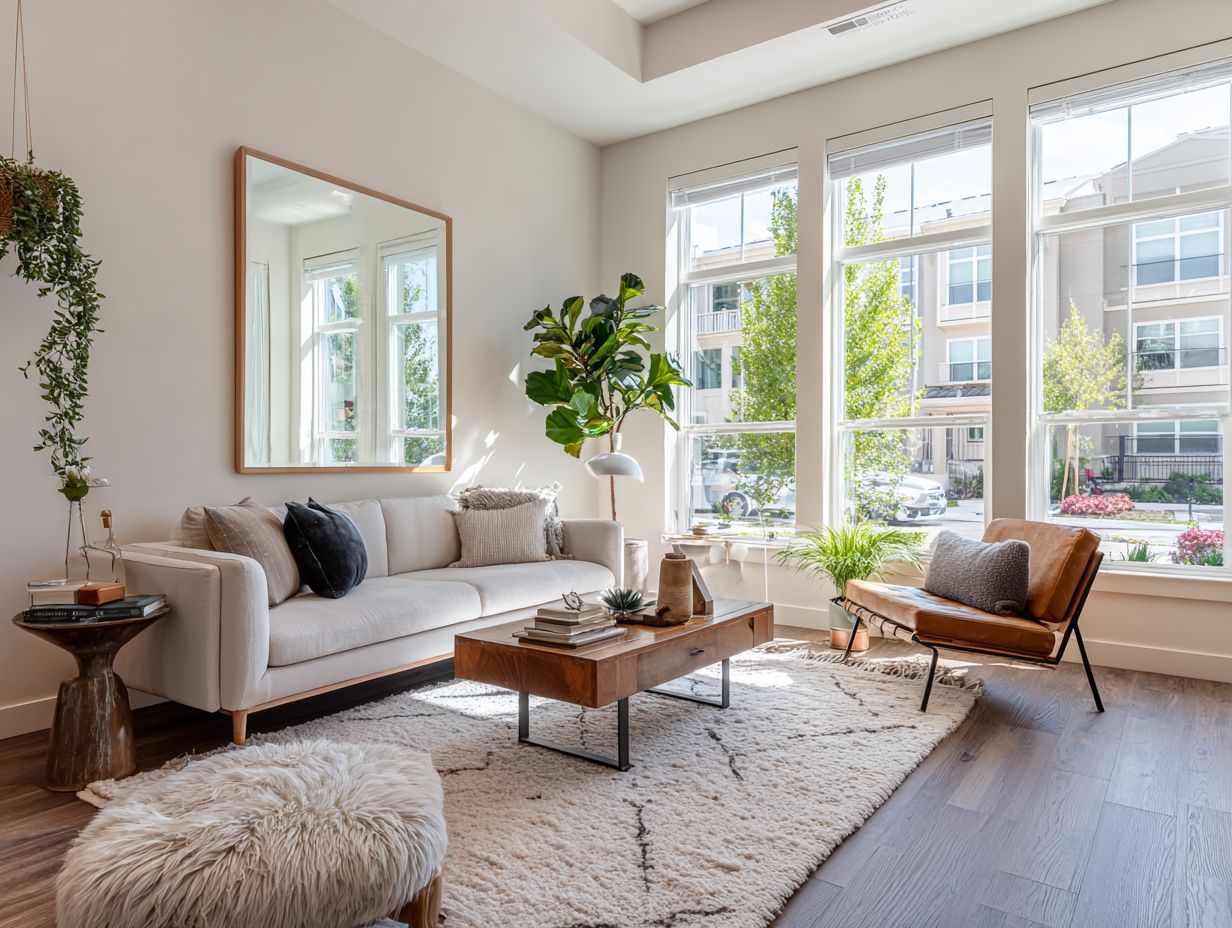
Choosing commercial-grade flooring for your home is useful in tough conditions. For those considering the durability of different materials, understanding the key differences between commercial and residential grade vinyl can help ensure you make the best choice for your specific needs.
High-Traffic Areas
For homes with high foot traffic, such as entryways or family rooms, commercial-grade flooring can provide the necessary resilience against wear and tear.
Consider options like luxury vinyl tile (LVT), laminate, and tile. LVT resists water, which is good for places where spills happen often. Laminate is cheaper and looks like wood, with prices between $2 and $5 per square foot.
Tile, although more costly ($5-$15 per square foot), is extremely durable and easy to clean. Regular maintenance includes sweeping and occasional mopping, ensuring longevity and aesthetics.
Selecting the right type depends on your family’s needs, budget, and preferred look for your space.
Homes with Pets
Pet-owning households benefit from commercial-grade flooring’s resistance to scratches, stains, and moisture, ensuring longevity amidst playful pets.
Two excellent pet-friendly flooring types include luxury vinyl and rubber.
Luxury vinyl is highly durable and comes in various designs, mimicking wood or tile, while being easy to clean with just soap and water.
Rubber flooring, on the other hand, is a non-slip surface, ideal for high-traffic areas and offers sound insulation, dampening noise from pet activities.
To keep it in good condition, it’s important to sweep regularly and mop now and then. These methods handle spills and accidents well, which makes them suitable for homes with pets.
Allergy Considerations
Commercial-grade flooring often uses materials that lower allergens, making it a good choice for those with allergies.
Materials such as cork, bamboo, and vinyl can greatly reduce allergens in the home. Cork is naturally antifungal, while bamboo’s smooth surface makes it easy to clean and maintain.
Look for low-VOC (volatile organic compounds) vinyl flooring options that minimize irritants in your indoor environment. Regular maintenance, like sweeping and using a damp mop, keeps allergens at bay.
Consider using area rugs made from natural fibers, as these can trap dust and are easier to wash than wall-to-wall carpeting.
Why Choose Commercial-Grade Flooring
Selecting commercial-grade flooring offers many benefits, such as high durability, low upkeep, and being environmentally friendly. Additionally, understanding the true cost of cheap flooring can help make informed decisions for long-term value.
Performance Under Stress
Commercial-grade flooring excels in high-stress situations, withstanding extreme pressure without compromising integrity or appearance.
This durability is achieved through advanced materials like vinyl composite tiles (VCT) and luxury vinyl planks (LVP), which offer excellent resistance to scratches and dents.
For example, VCT usually has a wear layer of 20 mil, while LVP can go up to 30 mil, which makes it suitable for retail areas or high-traffic offices.
Installing is easy with options like glue or click-lock systems, which let you replace parts quickly when necessary.
By selecting a product matched to traffic levels, you can achieve durable performance that meets your needs.
Ease of Maintenance
With easy cleaning methods, commercial-grade flooring makes upkeep simple, needing just regular sweeping and mopping.
To maintain its condition, use a pH-neutral cleaner every 2-4 weeks to avoid harming the finish.
For high-traffic areas, consider implementing a bi-weekly deep clean using a microfiber pad and a floor scrubber, which effectively removes grime and helps preserve the sheen.
Placing mats at entryways can significantly reduce dirt accumulation, further extending the lifespan of the flooring.
Setting up this regular cleaning schedule helps keep your flooring looking good and lasting a long time.
Environmental Considerations
Many commercial-grade flooring products are designed with sustainability in mind, utilizing recycled materials and low-emission manufacturing processes.
For example, Armstrong Flooring offers options certified by LEED, including their Luxe Plank line, which features 70% recycled content. Their products meet eco-friendly standards and offer long-lasting use and a pleasing look.
Another good choice is Mohawk’s SmartStrand, made from recycled plastic bottles and recognized by the Cradle to Cradle program.
When selecting flooring, look for certifications such as:
- FloorScore for indoor air quality
- GreenGuard makes sure the materials are good for your surroundings.
Types of Commercial-Grade Flooring
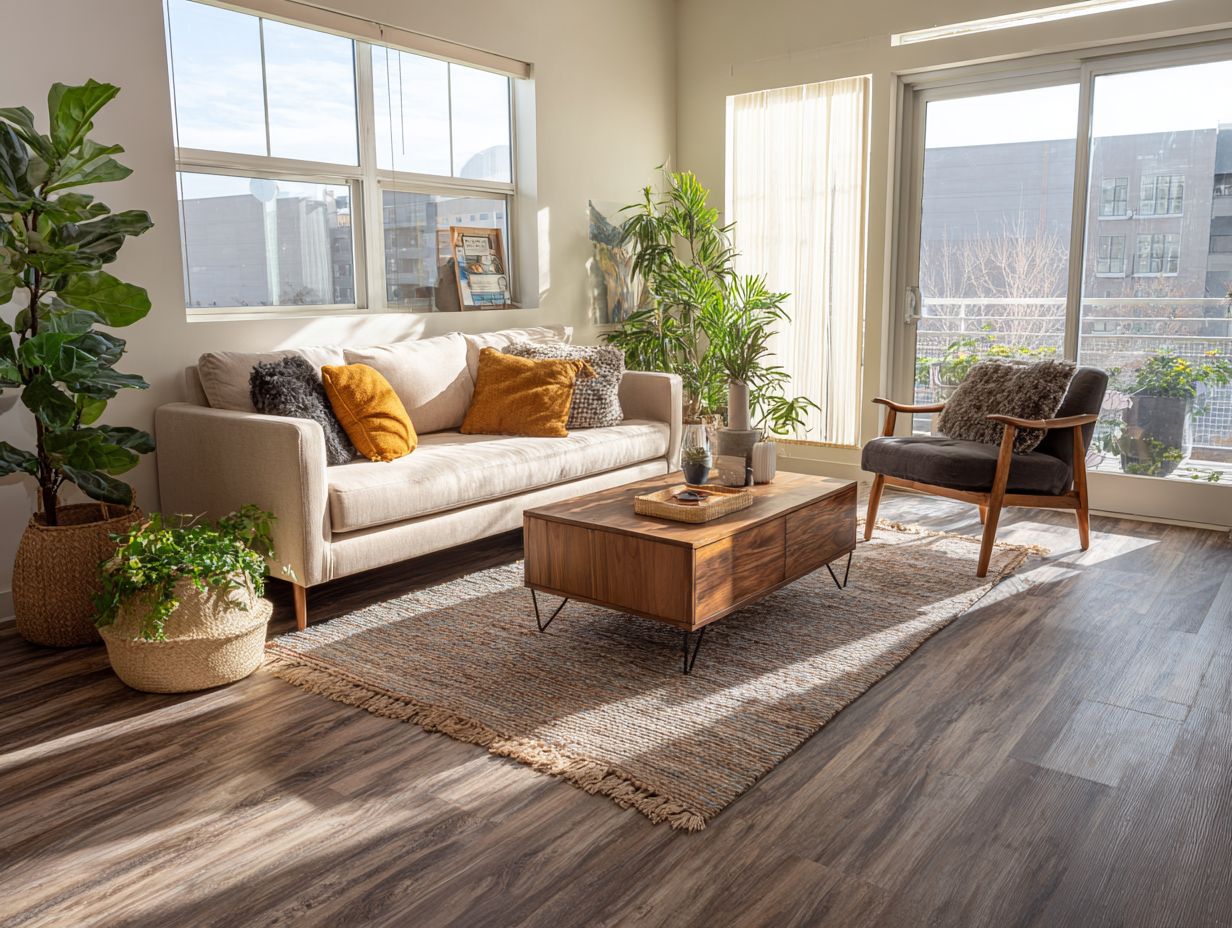
The market for commercial flooring offers different types designed to meet specific functional and visual requirements. One noteworthy option is the use of recycled and reclaimed materials, which not only meet aesthetic demands but are also environmentally friendly. This approach aligns with the principles outlined in our analysis of Recycled and Reclaimed Flooring Options Guide.
Vinyl Flooring
Vinyl flooring is a popular choice for both commercial and residential settings, known for its waterproof properties and vast design options.
Its cost-effectiveness makes it appealing; quality vinyl flooring typically ranges from $2 to $5 per square foot.
Setting it up is easy. You can either glue it down or use click-lock systems, which are suitable for both people doing it themselves and experts. For example, products like Shaw’s Lifeguard and Armstrong’s Cortec boast ease of installation and durability, ideal for high-traffic areas.
Maintenance is minimal, requiring just regular sweeping and occasional mopping. This blend of affordability, ease of installation, and low maintenance makes vinyl flooring a favored option for many homeowners.
Tile Flooring
Tile flooring is strong and looks good, which makes it a good choice for busy commercial areas and stylish home settings.
When considering tile flooring, it’s essential to choose between options like ceramic and porcelain.
Ceramic tiles, typically costing $1 to $5 per square foot, are ideal for indoor use and come in a wide range of colors. Porcelain tiles cost between $3 and $10 for each square foot. They last a long time and resist water, making them a good choice for bathrooms and outdoor areas.
Installation methods vary; adhesives are common for both types, yet porcelain may require specialized tools for cutting.
Regular maintenance involves sweeping, mopping with a mild cleaner, and sealing grout lines every few years to extend their lifespan.
Carpet Tiles
Carpet tiles are popular because they are easy to install and work well in both business and home settings, offering comfort and a stylish look.
Carpet tiles help control sound and cut down on noise, which makes them a good choice for noisy places.
If a tile becomes stained or damaged, you can easily replace just that section without redoing the entire floor.
Setting it up is easy-just follow these instructions:
- Prepare the subfloor,
- Apply adhesive,
- Align the tiles.
Carpet tiles generally cost between $1 and $5 per square foot, while regular carpet usually costs between $3 and $10. This makes carpet tiles a cheaper option for homeowners and businesses.
Laminate Flooring
Laminate flooring looks like hardwood and is durable, making it a suitable choice for homes with a lot of foot traffic.
Its construction typically features a core layer made from high-density fiberboard, topped with a photographic layer that mimics wood grain, and finished with a wear-resistant coating.
Popular brands like Pergo and Shaw offer a variety of styles and pricing options, ranging from $1.50 to $4.00 per square foot.
Maintenance is easy-just sweep regularly and mop with a damp cloth now and then to keep it looking like new.
Laminate’s moisture resistance makes it an excellent choice for kitchens and bathrooms, areas often prone to spills.
Installation Considerations
Correct installation is essential for getting the most out of commercial flooring, needing careful planning of techniques and preparation. For an extensive analysis of this trend, our deep dive into the key differences between commercial and residential grade vinyl explores important considerations that can affect installation effectiveness.
Professional vs. DIY Installation
Installing it yourself can cut expenses, but hiring experts makes sure that high-quality flooring is put in the right way, following the manufacturer’s instructions.
Professional installation typically ranges from $1 to $3 per square foot, reflecting the skills and tools necessary for a flawless finish. For instance, while the DIY approach may seem economical, improper measurements or inadequate subfloor preparation can lead to costly mistakes.
Professionals bring experience in handling challenging layouts and managing material wastage effectively. They typically provide guarantees on their work, giving assurance. Considering these details can guide you in choosing whether to hire a professional or do the project on your own.
Subfloor Preparation
Preparing the subfloor properly is key to ensuring that commercial flooring lasts and performs well. Different floors need different methods to prepare them properly.
-
For concrete subfloors, begin by cleaning the surface thoroughly and repairing any cracks with a suitable patching compound. Use a leveling compound to create a smooth surface, ensuring it cures completely before installation.
-
For wooden subfloors, inspect for any signs of rot or damage; replace any compromised boards and secure loose ones with screws. Checking moisture levels is important in both cases-too much humidity can cause flooring problems, so use a moisture meter to confirm up to 12% for wood and that concrete is dry and cured.
Final Thoughts on Commercial-Grade Flooring for Home Use
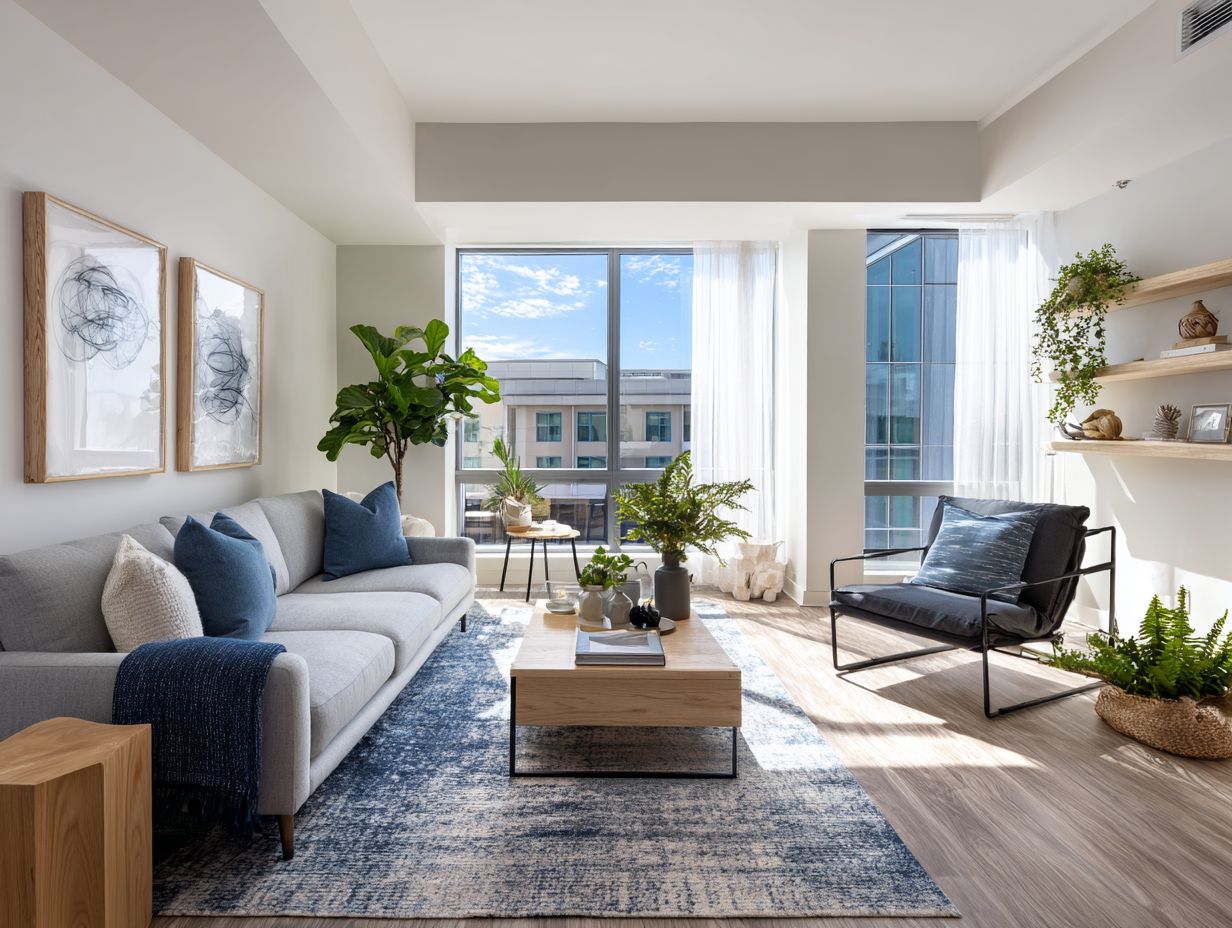
Commercial-grade flooring is a strong and stylish choice for homeowners looking for durable and useful options suited for various home settings.
This flooring type shines in high-traffic areas like kitchens and living rooms, offering superb durability and ease of maintenance.
Luxury vinyl planks look good and resist scratches, which makes them perfect for homes with pets. Similarly, polished concrete provides a sleek, modern look while withstanding heavy foot traffic.
For the best results, think about having a professional install it, especially for complicated designs. Choosing materials that repel moisture can stop mold from forming in damp environments, adding more security and reassurance.
Frequently Asked Questions
What is commercial-grade flooring and why should I use it for my home?
Commercial-grade flooring is a type of flooring that is specifically designed and manufactured to withstand high levels of foot traffic and heavy use. It is a durable and long-lasting option for residential homes, especially for high-traffic areas like entryways and kitchens.
When should I consider using commercial-grade flooring in my home?
You should consider using commercial-grade flooring in your home if you have a large family or frequently host gatherings or events. It is also a good choice for homes with pets, as it is resistant to scratches and stains. If you’re looking for flooring that lasts a long time and doesn’t need much upkeep, commercial-grade flooring is an excellent option.
What are the benefits of using commercial-grade flooring for home use?
The main benefits of using commercial-grade flooring for home use include its durability, resistance to wear and tear, and low maintenance requirements. It comes in different styles and designs, so it can fit in any home. It can increase your property’s value and make it look well-maintained and polished.
Can commercial-grade flooring be used in all areas of the home?
Yes, commercial-grade flooring can be used in all areas of the home, including high-traffic areas like entryways, kitchens, and living rooms. It is also suitable for bathrooms and basements, as it is moisture-resistant. However, it might not be ideal for bedrooms since it can be less cozy and warm compared to other types of flooring.
What should I look for when choosing commercial-grade flooring for my home?
When choosing commercial-grade flooring for your home, it is important to consider the level of foot traffic in the area, your budget, and the overall style and design of your home. Look for flooring options with high abrasion ratings and warranties for durability. Picking a reliable and experienced installation company is important for proper setup.
How does the cost of commercial-grade flooring compare to other flooring options?
The cost of commercial-grade flooring can vary depending on the style, design, and manufacturer. Generally, it is more expensive than traditional flooring options, but the long-term durability and low maintenance requirements can make it a cost-effective choice. It is important to consider the overall value and benefits of commercial-grade flooring rather than just the initial cost.

